The city of Calgary abounds in appealing and interesting tourist attractions. Among them are unique monuments that tell about the city itself and Canada in general. More on the website calgary-future.
The Conversation
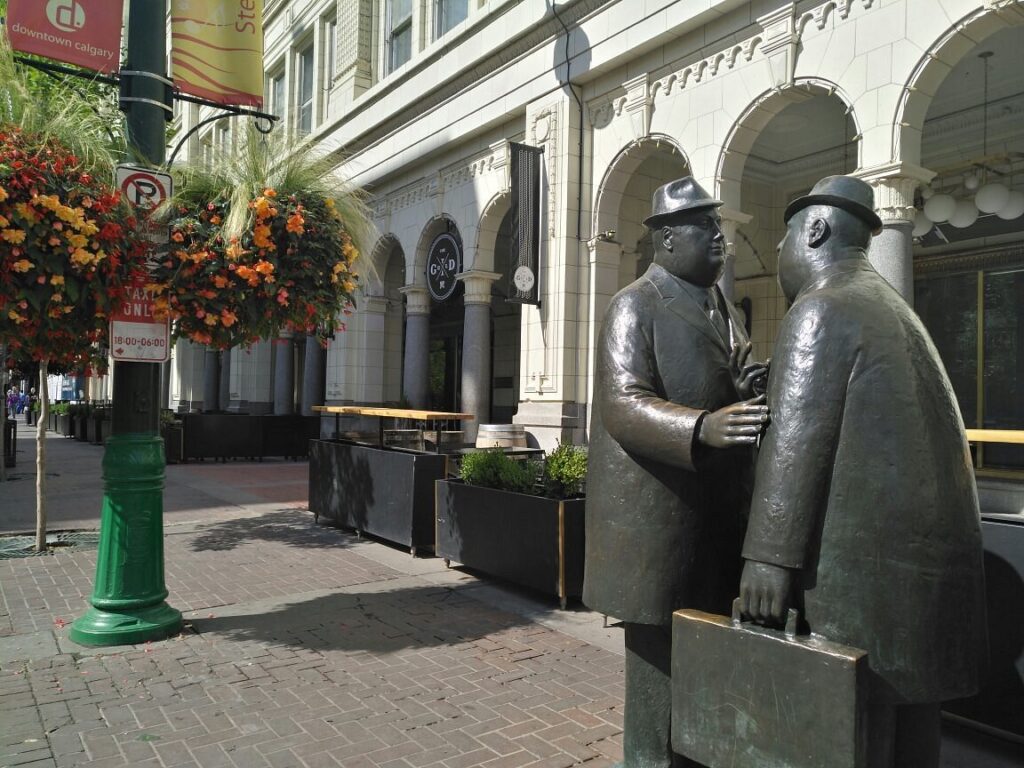
“The Conversation” is a humorous bronze sculpture in the large pedestrian mall “Stephen Avenue”, it depicts two businessmen who have just met. The sculpture is so realistic that you want to shake hands with the men and join the conversation. They have the typical appearance of mid-20th century businessmen: tie, coat, fedora and briefcase in hand.
This monument of architecture was created by Canadian sculptor William Hodd McElcheran. He wanted to convey a sense of nostalgia for people who are controlled by their own system with a desire to succeed and adapt in order to achieve power.
In 1981, “The Conversation” was presented to the city by Norcen Energy Resources. Shortly after its opening, sculptor McElcheran came to Calgary and spoke at the Alberta College of Art (later a university), calling for the development of architecture and art in Calgary.
Women Are Persons!
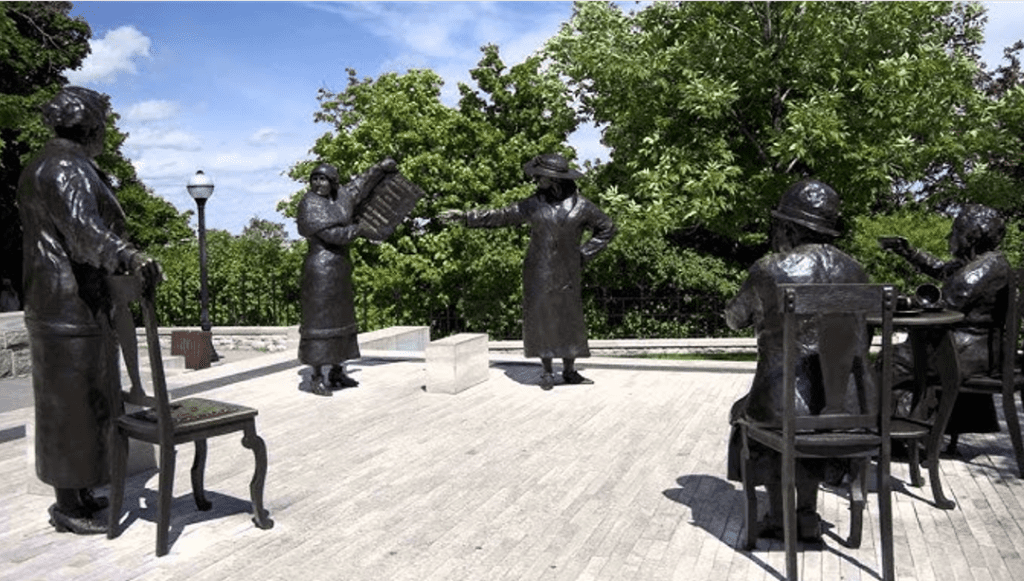
“Women are persons!” – a monument on Olympic Square dedicated to the “famous five” – Emily Murphy, Louise McKinney, Irene Parlby, Henrietta Muir Edwards and Nellie McClung. They fought to change the legal term “persons” in Canada, which, until October 18, 1929, excluded women from the term. Because of this definition, women could not be appointed to the Senate.
The Supreme Court of Canada rejected their case in 1928, but the Judicial Committee of the British Privy Council made the decision in favor of women on October 18, 1929.
Barbara Paterson created the monument. It was opened by Governor General Adrienne Clarkson at a special event on 18 October 1999.
The statues depict women in the moment of victory, who arrange a tea party. Nellie McClung, a writer who became a member of the Legislative Assembly of Alberta in 1921, holds a newspaper with the news that they had won the Persons case in 1929. Irene Parlby, a political activist and Alberta’s first female cabinet minister, stands next to McClung and points to a newspaper with the headline “Women Are Persons.” Henrietta Edwards, one of the founders of the Victorian Order of Nurses and an advocate for working women, sits with a cup of tea, looking at McClung with a newspaper. Louise McKinney sits next to her with a sense of pride and satisfaction, rejoicing in the victory. The first female judge of the British Empire, Emily Murphy, stands next to the chair and gestures to the audience to sit down and think about how the world has changed.
Women are depicted not on pedestals, but on the plain ground, so the author tried to emphasize that these were ordinary women who were able to defend their interests. An identical monument to the “famous five” was also erected on Parliament Hill in Ottawa.
The Family of Man
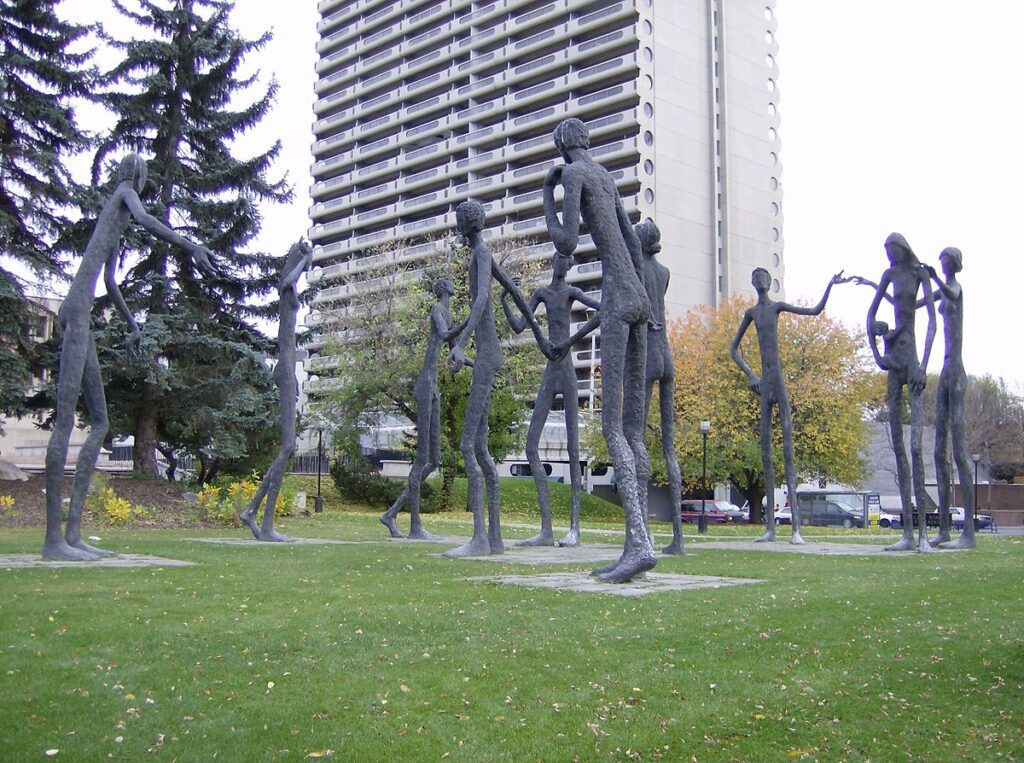
The Family of Man is a set of sculptures over 20 feet tall that were created specifically for display at the Expo 67 World’s Fair.
The sculptures were designed by Mario Armengol, through which he depicted two different moods, namely the dominant nature of man and the completely opposite feeling of dependence and worthlessness.
After the end of the exhibition, these sculptures were purchased at auction by Robert Cummings on behalf of Maxwell Cummings & Sons. This company later donated it to Calgary. In Calgary, a special committee was appointed to inspect and determine the best location for these statues. They chose the territory in front of the former Educational Center.
With no guidance on where to place the figures, city council staff had to decide how to place them. Any idea of how these statues relate to each other is entirely up to the viewer. Finally it was decided to place them in a circle, probably to show camaraderie and cooperation. Depicted women and men are naked. After these statues were installed, Calgarians were amazed and shocked by such directness and boldness.
Family of Horses

Horse Family – Statues installed due to Spruce Meadows.
Spruce Meadows is a multi-purpose sports company near Calgary, built by the Southern family in 1975. There is an equestrian sports complex on its territory. Many international sports events are held here. They also organize competitions for different age groups. In a clean and green environment, the horse is valued and encouraged to breed and train.
Once the artist Harry O’Hanlon won a public competition, after which his work – statues of horses – had to be cast. Spruce Meadows owner Marg Southern provided half of the required amount (namely $60,000). The group instructed to raising the remaining funds for the sculptures has ceased work. Marg Southern feared the statues would never be cast, so she donated an additional $45,000. Citizens of Calgary raised the rest – $15,000.
The statues were placed in front of the seat of the local government. They reflect Calgarians’ deep love for horses. The stallion is positioned as if protecting and covering the foal and mare. This is also not accidental: the author wanted to demonstrate the strength and kinship of local families and the special bond between relatives.
Transit Story
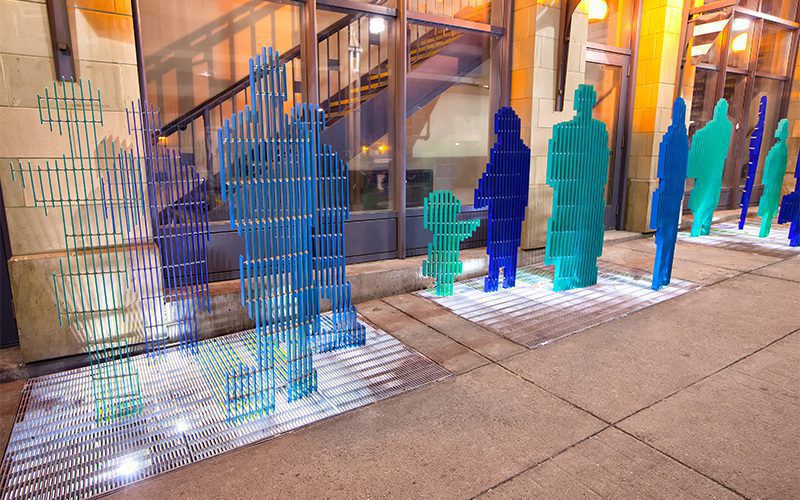
The Transit History installation consists of 30 human sculptures along the LRT platform at 7 Avenue and Center Street in downtown Calgary. The figures are made of steel, carefully sandblasted and expertly painted.
The author is visual artist and designer Jill Anholt, a former resident of Calgary. Her work demonstrates the properties of time, movement, light and materiality. Jill’s intention is to intrigue passers-by, encouraging them to take a closer look at the work and explore human relationships. The artwork evokes the ephemeral presence of former travelers. The installation is capable of change.
Weaving Fence and Horn
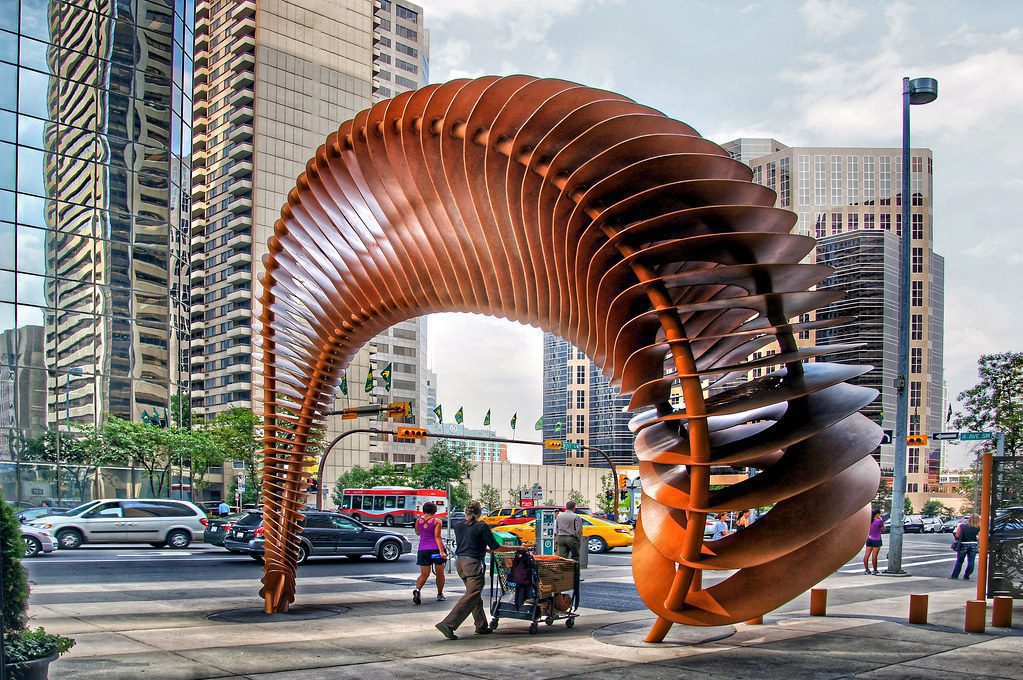
When John McEwan, the sculptor from Ontario, came to Lethbridge in the late 1970s to show his work at the Art Gallery of Southern Alberta, he made friends here. On a return visit, while walking with friends around Waterton, he found the horn of a bighorn sheep.
In 2000, John began an art project for TransCanada, using a horn as the main subject, which served as a reference on the animals that live in the nearby mountains. He cast the original horn he found in wax, created cross sections and separated them with washers.
McEwan worked with steel construction company Walters Group to create a work of monumental scale. It was the first days of computer modeling, and McEwan learned how to navigate the digital design process for the conical spiral structure that spans 30 feet, rises 24 feet and weighs 16 tons.
In 2001, when the TransCanada Tower was completed, there was a need to address high wind attacks around the building. McEwan’s finished work of art on this site had to stand for a sudden, violent storms. This prompted McEwan to design another stainless steel “fence” as a functional windbreak. Therefore, the monument installed in this place performs a practical function, and also demonstrates the strength and power of nature.


